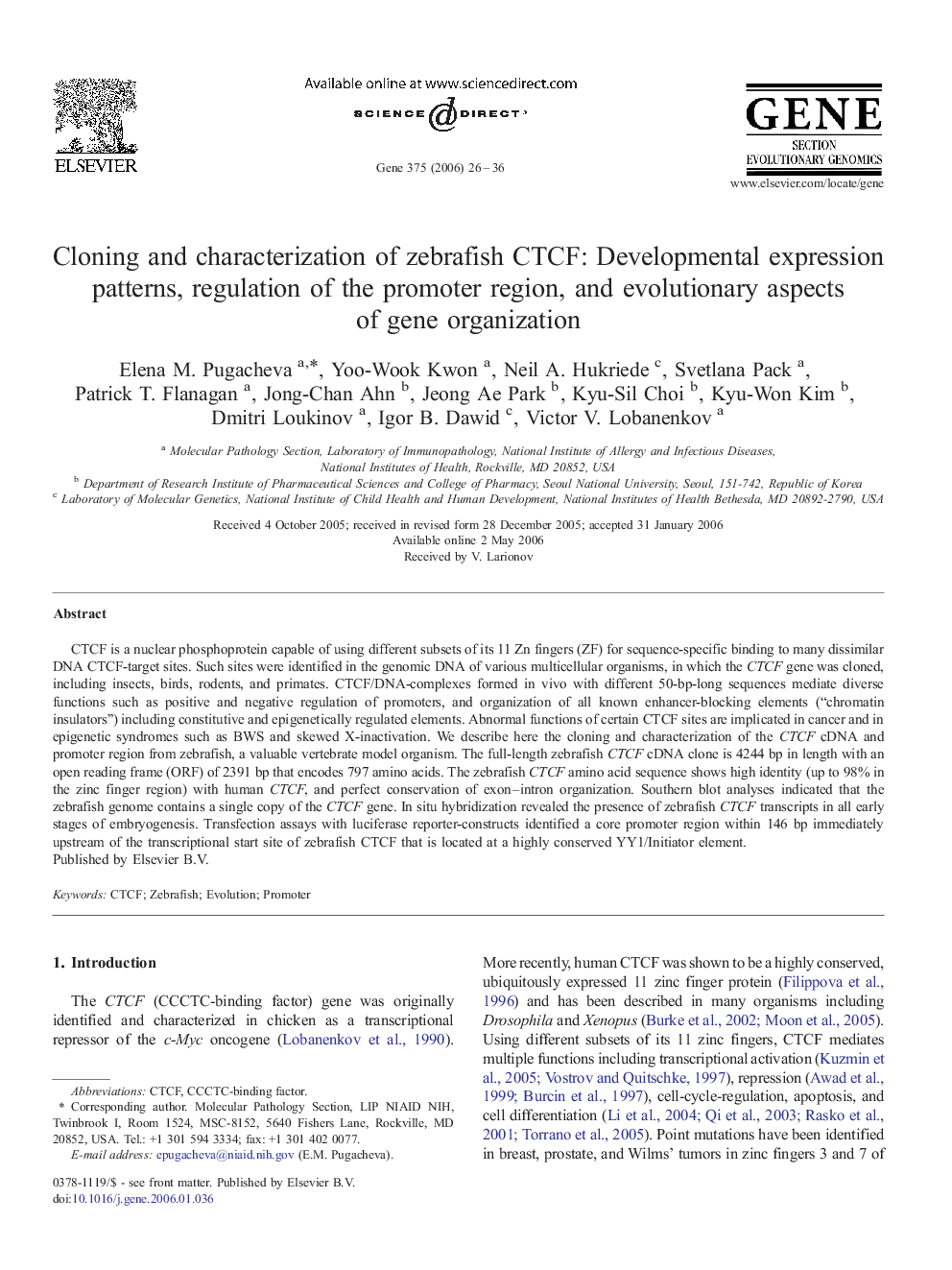| Article ID | Journal | Published Year | Pages | File Type |
|---|---|---|---|---|
| 2820295 | Gene | 2006 | 11 Pages |
CTCF is a nuclear phosphoprotein capable of using different subsets of its 11 Zn fingers (ZF) for sequence-specific binding to many dissimilar DNA CTCF-target sites. Such sites were identified in the genomic DNA of various multicellular organisms, in which the CTCF gene was cloned, including insects, birds, rodents, and primates. CTCF/DNA-complexes formed in vivo with different 50-bp-long sequences mediate diverse functions such as positive and negative regulation of promoters, and organization of all known enhancer-blocking elements (“chromatin insulators”) including constitutive and epigenetically regulated elements. Abnormal functions of certain CTCF sites are implicated in cancer and in epigenetic syndromes such as BWS and skewed X-inactivation. We describe here the cloning and characterization of the CTCF cDNA and promoter region from zebrafish, a valuable vertebrate model organism. The full-length zebrafish CTCF cDNA clone is 4244 bp in length with an open reading frame (ORF) of 2391 bp that encodes 797 amino acids. The zebrafish CTCF amino acid sequence shows high identity (up to 98% in the zinc finger region) with human CTCF, and perfect conservation of exon–intron organization. Southern blot analyses indicated that the zebrafish genome contains a single copy of the CTCF gene. In situ hybridization revealed the presence of zebrafish CTCF transcripts in all early stages of embryogenesis. Transfection assays with luciferase reporter-constructs identified a core promoter region within 146 bp immediately upstream of the transcriptional start site of zebrafish CTCF that is located at a highly conserved YY1/Initiator element.
